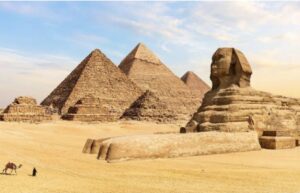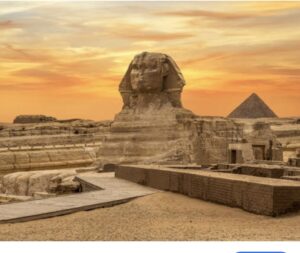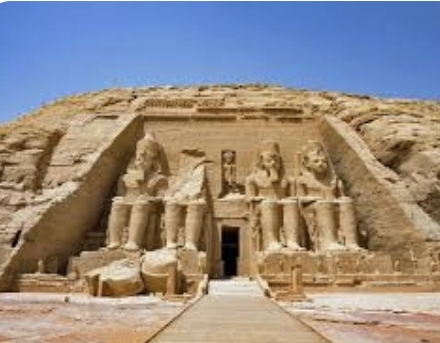Egypt, the cradle of ancient civilization, is a land of timeless allure and intrigue. From the majestic pyramids that rise out of the Sahara desert to the bustling metropolis of Cairo, Egypt is a nation that bridges ancient history with the modern world. This documentary explores Egypt’s rich cultural heritage, its significant contributions to human history, and its vibrant present-day society.

Ancient Egypt: The Birthplace of Civilization
Egypt’s ancient civilization, flourishing around 3100 BC, is one of the most remarkable in human history. The country is renowned for its monumental architecture, with the Great Pyramid of Giza being one of the Seven Wonders of the Ancient World. These pyramids, along with the Sphinx, temples of Luxor and Karnak, and the Valley of the Kings, stand as testaments to Egypt’s architectural prowess and religious devotion.
The Pharaohs: Central to ancient Egyptian society was the belief in divine kingship. Pharaohs were considered gods on earth, ruling with absolute authority. Notable pharaohs such as Ramses II, Akhenaten, and Tutankhamun left indelible marks on history, their reigns characterized by impressive construction projects, religious reforms, and rich tombs filled with treasures.

Hieroglyphs and Writing: Egypt also made significant contributions to the development of writing. The hieroglyphic script, consisting of over 700 symbols, was used for religious texts, official inscriptions, and monumental art. The discovery of the Rosetta Stone in 1799 was pivotal in deciphering these complex symbols, opening a window into understanding ancient Egyptian culture and administration.

Advances in Science and Medicine: Ancient Egyptians were pioneers in various fields such as mathematics, astronomy, and medicine. They developed a calendar based on the solar year, practiced advanced surgical techniques, and used a sophisticated system of weights and measures.

Resources:
– Baines, J., & Málek, J. (2000). Atlas of Ancient Egypt. Checkmark Books.
– Shaw, I. (2003). The Oxford History of Ancient Egypt. Oxford University Press.
– Wilkinson, T. (2010). The Rise and Fall of Ancient Egypt. Random House.
Religion and Mythology
Egyptian religion was polytheistic, encompassing a vast pantheon of gods and goddesses. Key deities included Ra, the sun god; Osiris, the god of the afterlife; and Isis, the goddess of magic and motherhood. The elaborate religious beliefs were reflected in their burial practices, most famously in the mummification process aimed at preserving the body for the afterlife.
Temples and Rituals: Temples were the focal points of religious life, serving as places of worship and housing the deities’ images. Priests conducted daily rituals, offerings, and festivals to honor the gods. The Temple of Karnak and the Temple of Luxor, with their massive columns and detailed carvings, remain as some of the most impressive religious structures from ancient times.
The Afterlife: Belief in the afterlife was central to Egyptian religion. The journey to the afterlife was depicted in the “Book of the Dead,” a collection of spells and prayers intended to guide the deceased through the underworld. Tombs were stocked with goods, treasures, and provisions for the dead to use in the afterlife.
Resources:
– Hornung, E. (1999). *The Ancient Egyptian Books of the Afterlife*. Cornell University Press.
– Pinch, G. (2002). Handbook of Egyptian Mythology. ABC-CLIO.
– Wilkinson, R. H. (2003). *The Complete Gods and Goddesses of Ancient Egypt*. Thames & Hudson.
Modern Egypt: Continuity and Change
While Egypt’s ancient past continues to captivate, its modern history is equally dynamic. The country has undergone significant transformations from its Islamic conquests in the 7th century, through Ottoman rule, to becoming a focal point in the geopolitical landscape of the Middle East.
Colonial Era and Independence: In the 19th and early 20th centuries, Egypt was a focal point of imperial interests, particularly by Britain and France. The construction of the Suez Canal in 1869 underscored Egypt’s strategic importance. Egypt gained independence from British rule in 1952, leading to the establishment of a republic under President Gamal Abdel Nasser.
Cultural Renaissance: The 20th century also saw a cultural renaissance in Egypt, with Cairo becoming a hub for Arab art, literature, and cinema. Prominent figures like novelist Naguib Mahfouz, the only Arab to win the Nobel Prize in Literature, and singer Umm Kulthum, whose voice became synonymous with Arabic music, emerged as icons of this period.
Political Landscape: The 21st century brought new challenges and changes. The 2011 Egyptian Revolution, part of the broader Arab Spring movement, led to the overthrow of long-time president Hosni Mubarak and significant political upheaval. Today, Egypt is navigating a path of modernization while grappling with issues such as political stability, economic reform, and social development.
Resources:
– Cleveland, W. L., & Bunton, M. (2016). A History of the Modern Middle East. Westview Press.
– Goldschmidt, A. (2008). Modern Egypt: The Formation of a Nation-State. Westview Press.
– Springborg, R. (2017). Egypt. Polity Press.
Egypt’s Economy and Society Today
Egypt is the most populous country in the Arab world and the third-largest in Africa. Its economy is diverse, with tourism, agriculture, and natural gas being key sectors. The Nile River remains the lifeline of Egypt, supporting agriculture and providing water resources in a predominantly arid landscape.
Tourism: Egypt’s rich historical and cultural heritage makes tourism a vital part of its economy. Sites like the Pyramids of Giza, the temples of Luxor, and the coral reefs of the Red Sea attract millions of visitors annually. However, the industry has faced challenges due to political instability and global economic shifts.
Urbanization and Development: Cairo, Egypt’s sprawling capital, is a city of contrasts, where modern skyscrapers coexist with ancient mosques and bustling bazaars. Rapid urbanization has led to challenges such as overcrowding, pollution, and housing shortages. In response, the government has embarked on ambitious projects like the construction of a new administrative capital to alleviate congestion in Cairo.
Social Dynamics: Egyptian society is characterized by a blend of traditional values and contemporary influences. Family remains a central pillar of social life, and Islam plays a significant role in cultural and daily practices. The youth, making up a substantial portion of the population, are driving change and modernization, embracing digital technologies and advocating for social reforms.
Resources:
– Beattie, A. (1994). Cairo: A Cultural History. Oxford University Press.
– Morsy, S. A. (1990). Egyptian Society: An Anthropology of the Peasantry in Egypt. American University in Cairo Press.
– Rutherford, B. K. (2008). Egypt after Mubarak: Liberalism, Islam, and Democracy in the Arab World. Princeton University Press.
The Future of Egypt
As Egypt moves forward, it faces the challenge of balancing its rich heritage with the demands of a rapidly changing world. Efforts to diversify the economy, improve infrastructure, and address social inequalities are critical for sustainable development. Additionally, Egypt’s strategic location and role in regional politics continue to make it a key player in the Middle East and North Africa.
Environmental Sustainability: The country is also addressing environmental issues such as water scarcity and the impact of climate change. Initiatives to enhance renewable energy sources, like solar power projects in the desert, are part of Egypt’s strategy to secure a sustainable future.
Cultural Preservation: Preserving Egypt’s vast cultural heritage remains a priority. Efforts to protect archaeological sites from urban encroachment and the impacts of tourism are ongoing. The Grand Egyptian Museum, set to open soon near the Pyramids of Giza, aims to showcase the country’s treasures and promote cultural tourism.
Resources:
– Fahmy, K. (2002). All the Pasha’s Men: Mehmed Ali, His Army and the Making of Modern Egypt*. American University in Cairo Press.
– Mitchell, T. (2002). Rule of Experts: Egypt, Techno-Politics, Modernity. University of California Press.
– Waterbury, J. (1978). The Egypt of Nasser and Sadat: The Political Economy of Two Regimes. Princeton University Press.
Egypt’s story is one of resilience, innovation, and enduring legacy. From the age of the pharaohs to its modern state, Egypt continues to fascinate and inspire. As the nation steps into the future, it carries with it a heritage that is not just a source of pride for Egyptians but a cornerstone of human civilization.
In every corner of this land, from the timeless banks of the Nile to the vibrant streets of Cairo, the echoes of the past harmonize with the pulse of the present, weaving a rich tapestry that defines the essence of Egypt.
Additional Online Resources
– The British Museum’s Ancient Egypt Collection: Provides a comprehensive overview of artifacts and their historical significance.
[The British Museum](https://www.britishmuseum.org/collection/galleries/egyptian-sculpture)
– Egyptian Ministry of Antiquities: Offers updates on archaeological discoveries and heritage preservation efforts.
[Egyptian Ministry of Antiquities](https://www.antiquities.gov.eg/Default.aspx)
– Egyptian National Library and Archives: Contains valuable resources on Egyptian history and culture.
[Egyptian National Library](https

